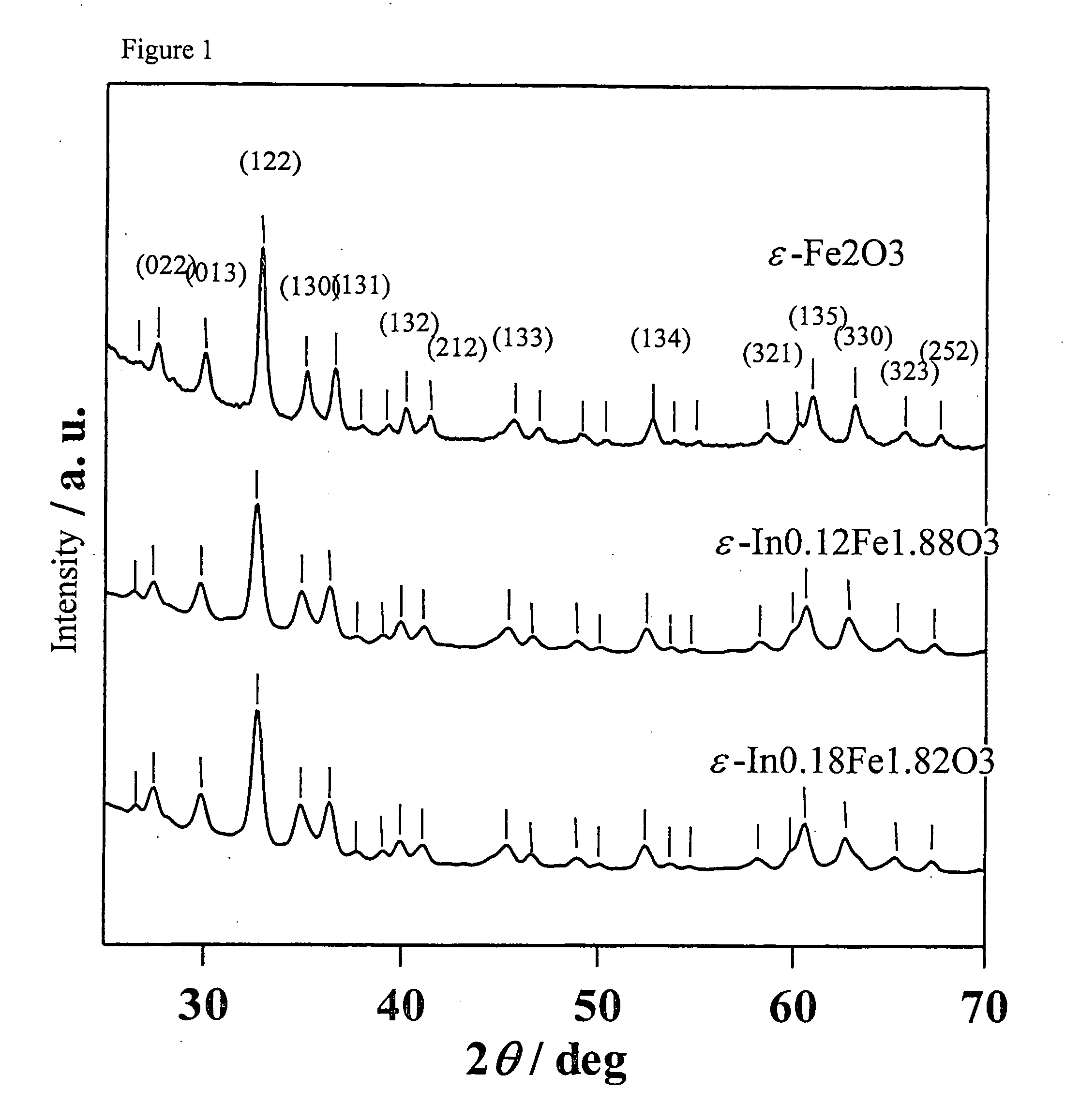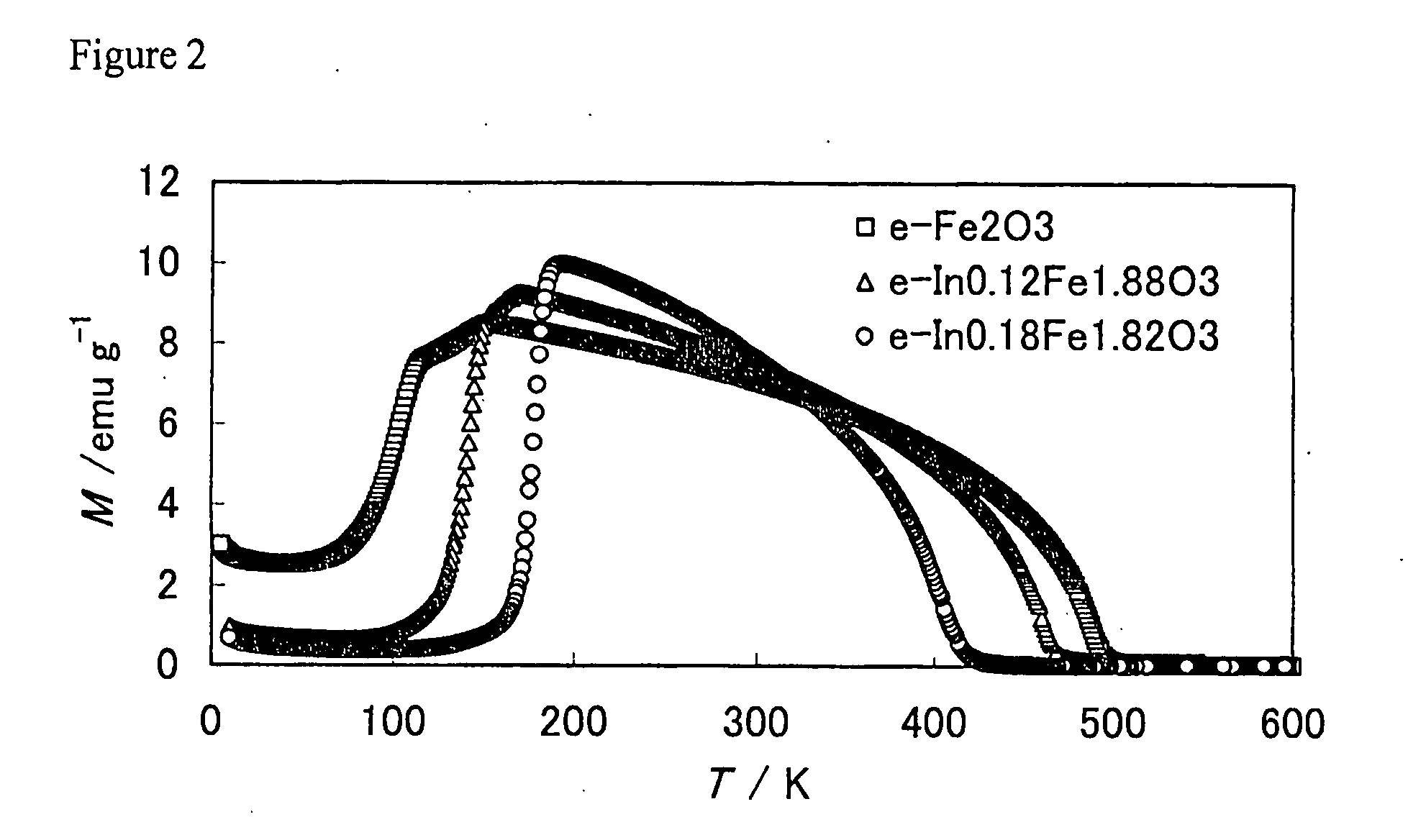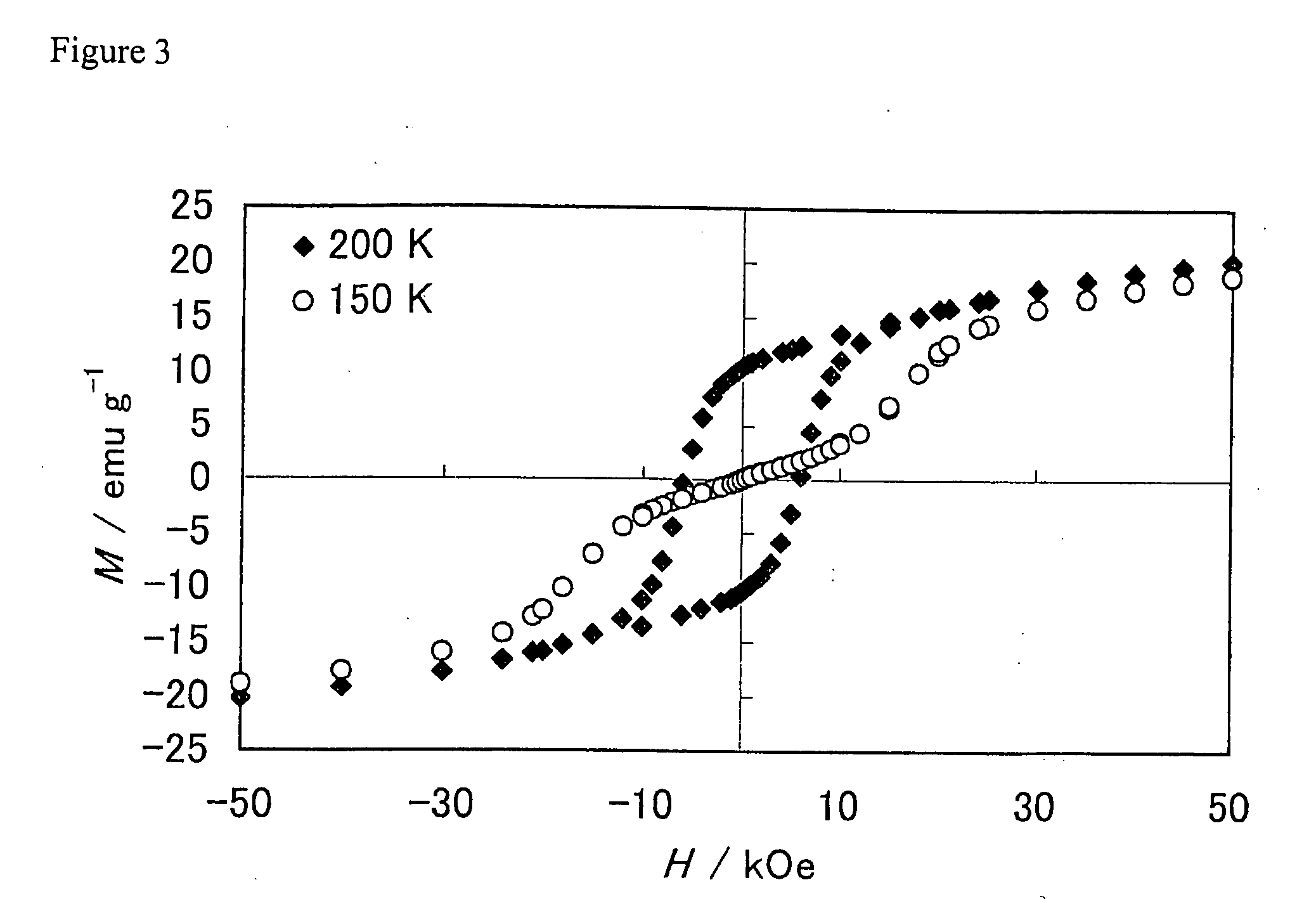Magnetic material, and memory and sensor using same
a technology of magnetic materials and memory, applied in the field of magnetic materials, can solve the problems of not being able to immediately apply material to thermally assisted magnetic recording and magneto-optical recording, and the head cannot write to such recording media, so as to achieve high saturation magnetic flux density, reduce hc, and reduce the effect of coercive for
- Summary
- Abstract
- Description
- Claims
- Application Information
AI Technical Summary
Benefits of technology
Problems solved by technology
Method used
Image
Examples
example 1
[0050]In this example, ε-In0.12Fe1.88O3 was synthesized.
Step 1
[0051]A micelle solution I and a micelle solution II are prepared.
[0052]Preparation of Micelle Solution I
[0053]6 ml of pure water, 18.3 ml of n-octane and 3.7 ml of 1-butanol were put into a Teflon™ flask, to which were added 0.00287 mol of iron (III) nitrate 9-hydrate, 0.000135 mol of indium (III) nitrate 3-hydrate and 0.0003 mol of barium nitrate, and the solution dissolved at room temperature while being vigorously stirred. A surfactant consisting of cetyl trimethyl ammonium bromide was added in an amount that brought the water / surfactant mol ratio to 30, and the solution stirred to dissolve it, thereby obtaining the micelle solution I. The charged composition had been intended to correspond to those shown as a formula of In0.09Fe1.91O3.
[0054]Preparation of Micelle Solution II
[0055]2 ml of a 25% solution of aqueous ammonia was stirred into 4 ml of pure water.
[0056]This was followed by the addition of 18.3 ml of n-octan...
example 2
[0066]In this example, ε-In0.18Fe1.82O3 was synthesized.
[0067]This was done by the same procedure as Example 1, except that in the preparation of the micelle solution I, the amount of iron (III) nitrate 9-hydrate added was changed from 0.00287 mol to 0.00273 mol, and the amount of indium (III) nitrate 3-hydrate added was changed from 0.000135 mol to 0.00037 mol. The charged composition had been intended to correspond to those shown as a formula of In0.18Fe1.82O3.
[0068]The sample thus obtained was measured by powder X-ray diffraction, resulting in the diffraction pattern shown at the bottom of FIG. 1. The peaks exhibited by this diffraction pattern correspond to those of the diffraction pattern of the ε-Fe2O3 crystal structure shown at the top of FIG. 1 (orthorhombic, space group Pna21). The calculated lattice constants of the sample were: a axis: 5.15 Å, b axis: 8.84 Å, c axis 9.53 Å.
[0069]Fluorescence X-ray analysis confirmed the composition of the sample to be ε-In0.18Fe1.82O3. Ro...
example 3
[0075]In this example, ε-In0.19Fe1.81O3 was synthesized.
[0076]This was done by the same procedure as Example 1, except that in the preparation of the micelle solution I, the amount of iron (III) nitrate 9-hydrate added was changed from 0.00287 mol to 0.002715 mol, and the amount of indium (III) nitrate 3-hydrate added was changed from 0.000135 mol to 0.000285 mol. The charged composition had been intended to correspond to those shown as a formula of In0.19Fe1.81O3.
[0077]The sample thus obtained was measured by powder X-ray diffraction, resulting in a diffraction pattern showing the sample to have a crystal structure similar to the ε-Fe2O3 of the Reference Example (orthorhombic, space group Pna21). Fluorescence X-ray analysis confirmed the composition of the sample to be ε-In0.19Fe1.81O3.
[0078]The cooling magnetization curve of the sample in a magnetic field was measured; the result is shown at the top of FIG. 5 (b) (just the portion up to 300 K). The spin reorientation temperature o...
PUM
| Property | Measurement | Unit |
|---|---|---|
| particle diameter | aaaaa | aaaaa |
| saturation magnetic flux density | aaaaa | aaaaa |
| magnetic phase transition temperature | aaaaa | aaaaa |
Abstract
Description
Claims
Application Information
 Login to View More
Login to View More - R&D
- Intellectual Property
- Life Sciences
- Materials
- Tech Scout
- Unparalleled Data Quality
- Higher Quality Content
- 60% Fewer Hallucinations
Browse by: Latest US Patents, China's latest patents, Technical Efficacy Thesaurus, Application Domain, Technology Topic, Popular Technical Reports.
© 2025 PatSnap. All rights reserved.Legal|Privacy policy|Modern Slavery Act Transparency Statement|Sitemap|About US| Contact US: help@patsnap.com



